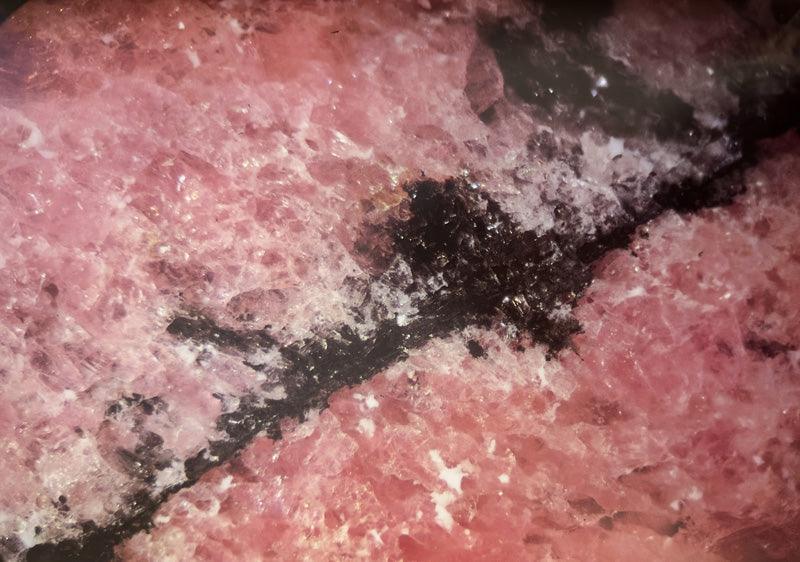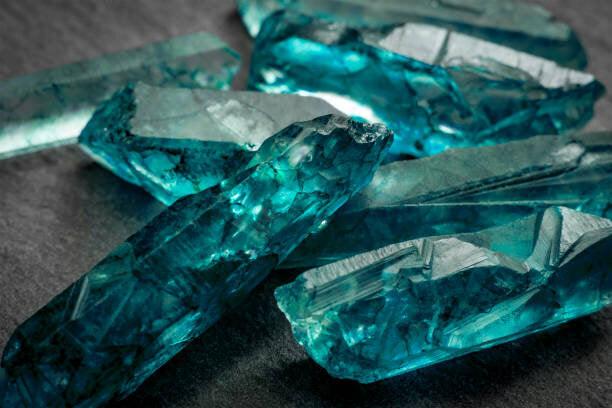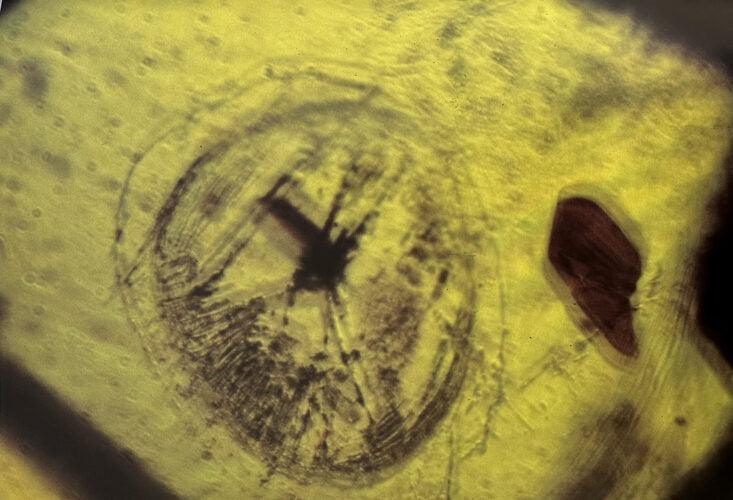
Rhodonite (gem)
Species: RHODONITE
Variety: Bustamite
Color: Pink, usually with black speckles
Transparency: Opaque to transparent (rare)
Crystal system: Triclinic
Chemical formula: MnSiO3
Chemical composition: Manganese silicate
Group: Amphiboles
Refraction: Positive biaxial birefringent
Refractive index: 1.733-1.736-1.746 (+0.005/-0.021)
Birefringence: 0.013 (+0.001/-0.003)
Pleochroism: Medium-weak: red-orange and red-brown
Density: 3.53 (±0.23)
Hardness: 5 ½ - 6 ½
Habit: Prismatic
Genesis of deposits: Metamorphic
Main deposits: Australia, Brazil, Germany, Italy (Calabria, Liguria, Val d'Agno, Valle d'Aosta, Val Malenco), Mexico, Romania, Russia, United States (New Jersey, Montana), Sweden, South Africa.
Technical specifications
Rhodonite belongs to the alkaline amphiboles and owes its origin to metamorphic processes that affect manganese deposits. The name of the mineral derives from the Greek ròdon, which means rose, understood as a flower.
The crystalline structure is based on chains of five Si04 tetrahedra linked by as many manganese ions; for this reason, in mineralogy, it is preferable to indicate the chemical formula with Mn5 (SisO15). Manganese is replaced, to a large extent, by ions of iron, magnesium and calcium. As occurs for the majority of amphiboles, the habitus is elongated prismatic, but the microcrystals frequently gather in opaque aggregates. Rhodonite is idiochromatic because its pink color derives from manganese ions. The opaque variety has black speckles due to manganese oxide; other impurities can cause the formation of greenish or yellowish areas. This mineral, when opaque or translucent, is cut with a curved surface; some rare transparent gems are faceted and purchased especially by collectors. A fibrous-radial variety, of grey-pink colour, called bustamite, is distinguished by the higher percentage of calcium replacing manganese; sometimes it can present chatoyancy. Rhodonite fractures can be conchoidal or irregular, the luster is vitreous, the cleavage is perfect in two almost perpendicular directions (92°30') even if it is not found in compact aggregates. This mineral is quite resistant to alteration: in fact it is weakly attacked by acids, it is normally not damaged by ultrasound or steam and it is stable to prolonged exposure to sunlight, however its low melting point means that this occurs easily under the action of a goldsmith's blowtorch. The gemological examination is based exclusively on the observation of the external appearance and on the detection of characteristic physical-optical data.

